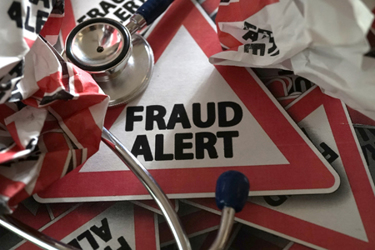Improve Operational Efficiency And Combat Fraud With Secure Real-Time Location Systems
By Vinay Gokhale, Thirdwayv

Retailers increasingly rely on Internet of Things (IoT) networks to securely connect a growing variety of devices and equipment. One of the most promising IoT applications is the use of
Real-Time Location Systems (RTLS) for inventory tracking and management. Deployed correctly, these systems leverage the same wireless sensing and secure identification systems already proven in pharmaceutical manufacturing, food safety, and industrial control. RTLS systems also can effectively combat retail fraud and minimize the cost and reputational damage of counterfeit items.
Today’s IoT-based RTLS systems can ensure that high-value consumer products are accurately accounted for to the retail point of sale. To be successful, however, the solutions must be protected from cyber threats at each step of the journey using a multi-layered, “security-by-design” strategy that ensures continuous availability of critical inventory status for all items and minimizes threats from rogue agents who are intent on accessing item data.
Benefits Of Retail Item Tracking
Real-time asset-tracking solutions improve inventory-management visibility from the shipper to the receiving dock, the retail shelf, the cash register, and on into the customer’s hands. They also make it possible to identify a product that has been returned from the customer or retail shelf to the distribution channel. These solutions may also be used to deploy over-the-air firmware updates to electronic products that are sitting on the retail shelf or to manage product recalls for specifically identified product lots.
Benefits extend to a retailer’s suppliers, as well. Sharing information with suppliers on item location status can help reduce stockouts and improve sales velocity. In some cases, retailers and their suppliers need greater awareness about an item’s status than simply its serial numbers and expiration dates. They may, for instance, need to know whether certain items are being maintained to temperature and other environmental requirements. In these cases, adding 360˚ track-and-trace capability to these systems provides visibility into environmental status of an item’s refrigerated production through its temperature-controlled distribution and storage on the retail store floor.
Item-tracking solutions also protect against counterfeiting. While most counterfeits are sold online from disreputable websites, the Global Anti Scam Alliance reported in April 2022 that 22 percent of respondents surveyed in a consumer study bought fakes from physical stores. Increasingly this includes the shop floors of prominent retailers as counterfeit products enter their supply chains at a product’s manufacturing site or during its distribution. This has prompted many luxury brands to incorporate near field communication (NFC) or radio frequency identification (RFID) tags directly into their products so they can be tracked across their entire journey to the retail floor.
The Trust Challenge
Ensuring trust in the supply chain from manufacturing to the point of sale also requires that the asset-tracking system can be trusted. This applies to the entire solution and its item tags, communications gateways, and multiple layers of software that work together to deliver cryptographically secure, high-reliability IoT-based item tracking. Many systems enable users to access these systems using commercial smartphones, which also must be protected because of their vulnerable security mechanisms.
The first layer of a secure and trusted asset-tracking solution is software that ensures the communication system can deliver continuous system availability so that critical inventory status for all items is always available. This layer also offers real-time item location awareness. Gateways can be deployed such that any tagged item can be tracked and located to within a distance of no more than five meters, even inside a multi-thousand-square-foot, multi-level store.
The second software layer protects the system’s communication channel from cyber criminals trying to access item data via the system’s smartphone app, the tagged item, or the cloud. Each is under constant threat from malware and wireless channel cybersecurity attacks, and more.
The third layer brings trust to each system element through mutual authentication. Applying digital cryptographic identities to all system elements establishes a root of trust so each can mutually authenticate the other and validate integrity any two elements will work together.
Finally, in the case of cold-chain tracking, the multi-layered solution must also be flexible enough so that environmental sensors can be added to the item tags as needed.
Each of these security layers can be added in a modular fashion to meet the specific needs of the retail item-tracking application using third-party software development kits (SDKs) that speed and simplify deployment. With today’s solutions, retailers can even retrofit one or more of these security layers into existing deployments and continuously improve their defenses. This flexibility will grow in importance as retailers continue to face an environment of ever-changing threats.
About The Author
Vinay Gokhale is Vice President of Business Development at Thirdwayv.
